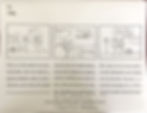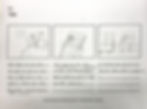Movit
A habit building mobile app through transportation planning exercises
Client:
Time:
My Role:
Team:
CMU Graduate Student Assembly
8 Weeks
Researcher, UI/UX Designer
Nicole Wan, So Young Han, Xiaoyan Song, Jiaqi Wang, Nary Ramakrishnan
Overview
As a CMU student who works 14 hours a day, 7 days a week, how do you feel when you fall behind your planned schedule, run late for a bus, and then, late for school? We found that students would feel bad about themselves when that happens.
Movit is designed to help students stay on top of their schedule through transportation planning. It supports calendar-based commute planning, auto-detection of plan completion, and rewards for persistent plan completion. We believe Movit will help students to form the habit of being organized, starting from their commute and shaping their life.

Task From Client
Enhance transportation experience for CMU grad students
From our client CMU GSA, we are given with this task as our project goal to support the GSA goal of providing safe and reliable transportation to graduate students.
Our Focus
Improve students' transportation planning experience
Our pilot research suggested that existing transportation planning process is not satisfactory in many ways - information is scattered, unreliable, and non-adaptive for individual preference. We validated students’ need when planning for transportation, and designed Movit to provide students a better transportation planning experience.
Methodology

We approach the problem with the double-diamond model. The team begins with research to learn about target user and explore what problem we are exactly solving here. Generating several ideas, we develop, test and refine them iteratively.
Our process consists of five main stages which are generative research, defining problem, need validation, design, and design validation:

Insights
Utilizing multiple user research methods through the whole project, there are three main insights that we’ve learned from the research process:

Solution
Seamless habit-formation experience through different scenarios
Integrating transportation plan into daily schedule to promote users' habit formation of being organized and providing incentives for continuous use.
Feature Highlights


00. Onboarding
Take the user to a short introduction about how does Movit work at the beginning. Users will receive 3-step guidance during the onboarding experience to know how Movit functions as a habit building App.

01. Google Calendar Integrated with Personal Preference
Movit allows users to import Google Calendar to make things easier when they are setting up their personal schedule. Movit also generates transportation goals based on users' preference. Users will have an integrated schedule with both their personal events and transportation plan after telling Movit what they like.

02. Incentivized Habit Formation
Movit allows users to get reward by accomplishing their goals. Our client GSA serves as the main source of the reward. Students can receive tickets for GSA events by successfully complying to their plan.

03. Accessible across Different Devices
Movit allows users to use it any time and anywhere. By implementing it in the wearable devices, we envision that users can get prompted during their busy morning routine without having to pick up their phone.

Process
Background research
"How is the current transportation system?"
We created a stakeholder map to better understand different parties involved in our whole project so that we could make wiser design decisions throughout the project.


Before the final draft, we first created a list of stakeholders. Then, using a whiteboard, our group annotate it with speech bubbles, labels, symbols, lines, and arrows.

Generative research
“How do students plan on their transportation?”
We carried out the contextual inquiry to understand how students plan their transportation currently. We also distributed a survey to over 58 CMU students to know better about the tools, the planning method and the general planning habit that they have in daily life.



In the team interpretation session, I and the other 2 two teammates complete the affinity diagram above as a way to organize all the findings from users.
Consolidation and ideation
We held an interpretation session followed by the affinity diagramming
after we gathered data from contextual inquiries and survey: students need assistance during decision-making on transportation methods, which lead us to ideate the preferred future, creating 15 storyboards.

Need Validation
With 15 storyboards we hold, we conducted a speed-dating session with target audience to validate user's need. We found out that students not necessarily need to be assisted during the decision-making process.
Moreover, they themselves desire to control what they are choosing from and deciding upon. Despite this, students indeed need help when they are trying to comply with their plan for transportation as they value the punctuality very much.
“I would walk to school if I miss the bus because waiting for the next bus will get me late”
Punctuality
Effortlessness
“... it’d be great if I don’t need to switch between Transit and BusGazer every time.”
“… I could take a Uber, but I mean, it makes me feel I’m an unorganized person”
Sense of Control




Aligning with deeper findings during need validation session, we refined possible solutions with 5 final storyboards.
Problem reframing
After digging deeper to user's real unmet needs, we reframed the problem to be solved as:
" How might we empower students with an effortless and organized
transportation experience?"
Design sprint


We decided on four main features of the product, which were: planning, reminding, progress tracking and rewarding. Based on the features, we did a four-minute design sprint collaborating with peers.
Prototype
Paper prototype




We did 5-second testing with 5 users to see their first impression of our prototypes and whether they were able to understand the purpose of the product. Receiving the feedback, we made four key screens connected more with each other and gave a better signal on the calendar screen to show our intentions.

Wireframe
Final Screens



Takeaways
-
Adapt user research methods to a different stage and need of the project - We learned over 20 user research methods during class and we strived to pick the most suitable method for each stage of the project. Using the appropriate method to discover user needs and pain points proved to be beneficial and much more effortless than using the one that "everyone is using" but we don't really know where its value lies in.
-
Reframing is helpful for discovering potential solutions - By reframing/redefining the problem in the middle of the project, we identified several potential pain points that might otherwise be ignored by us. Based on the findings, we developed new ideas and storyboards that have been identified as useful by users during the speed dating sessions. So reframing is helpful when observed behavior conflict with the assumption and proposed assumptions doesn't stand.